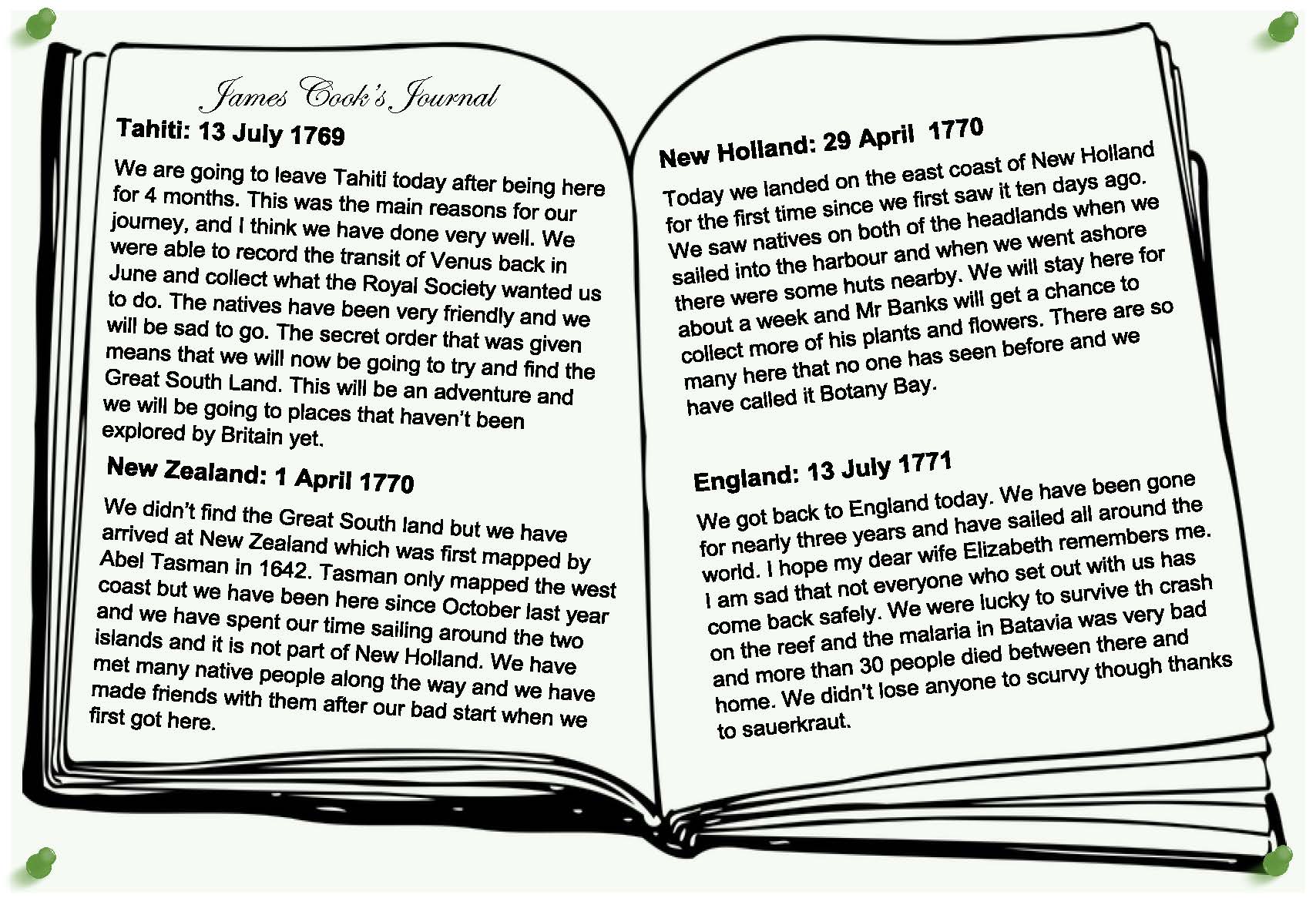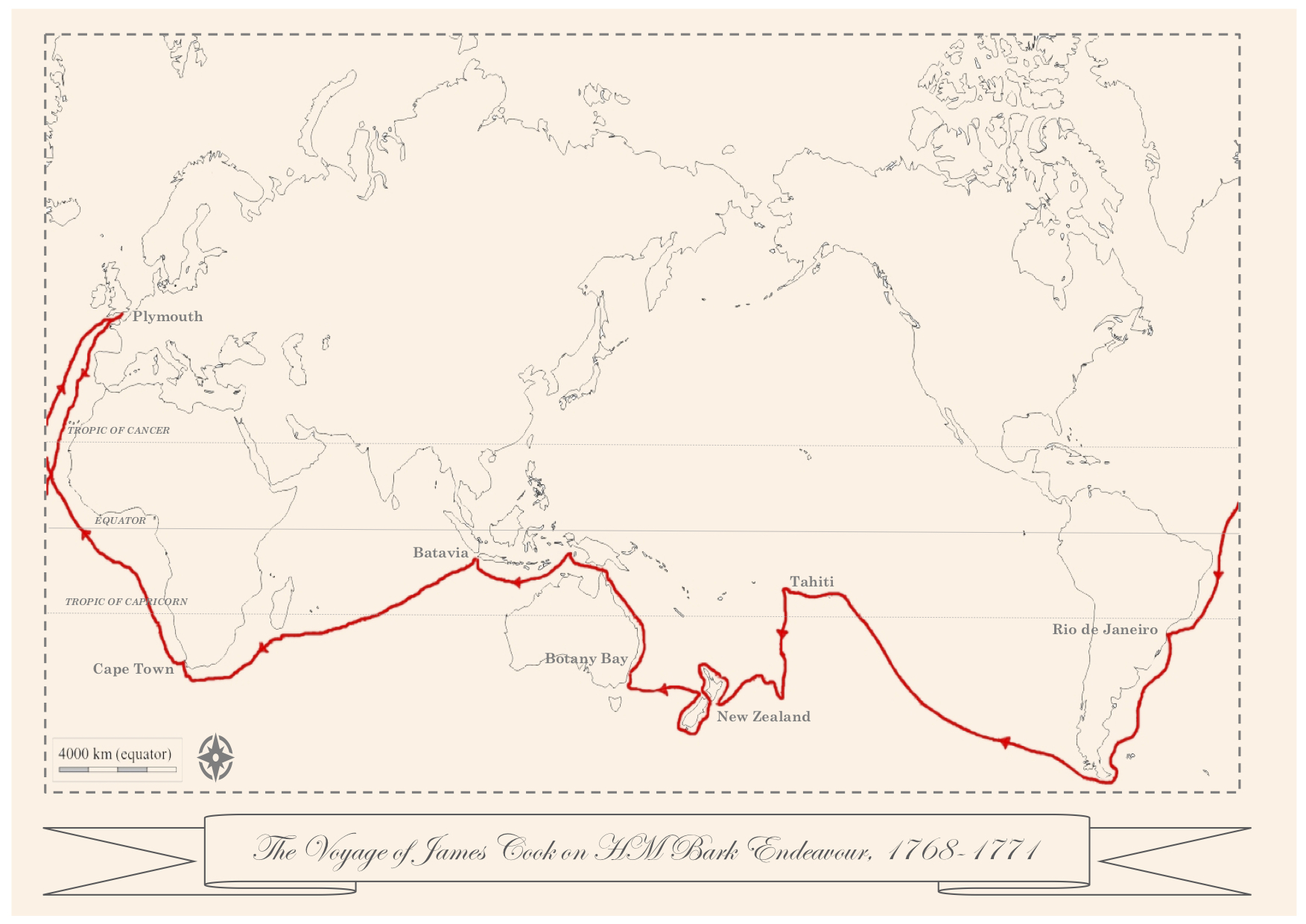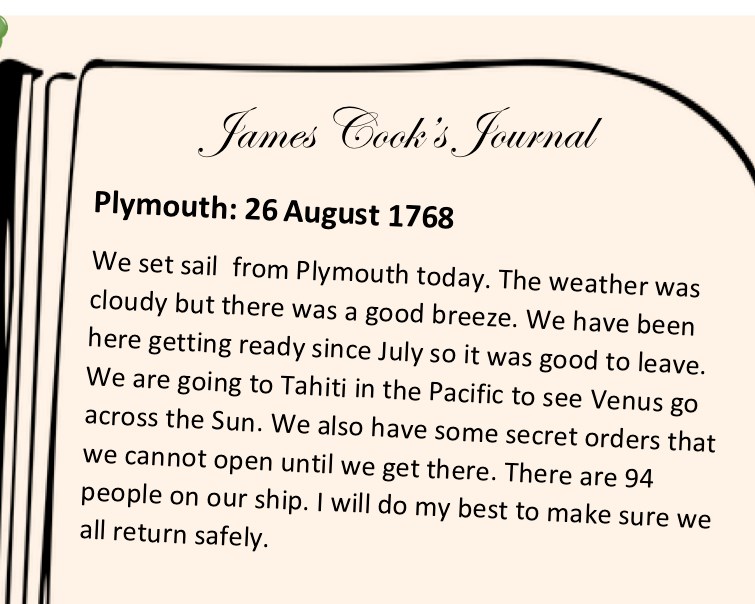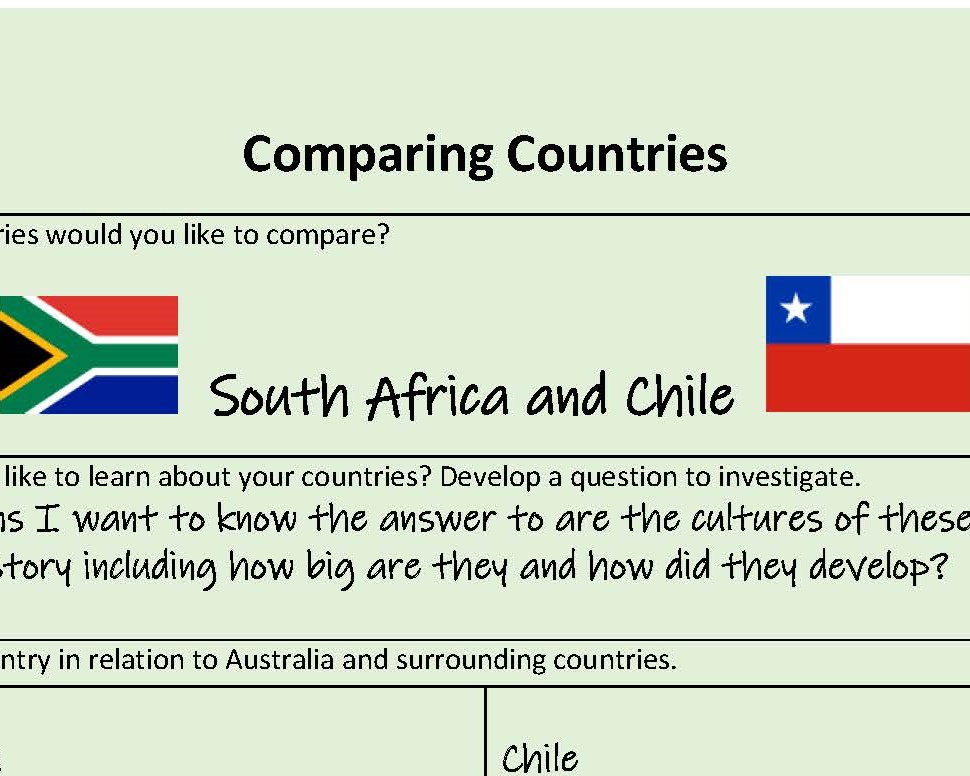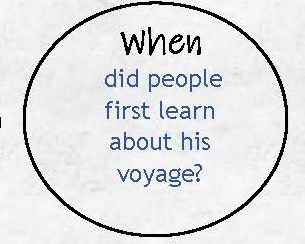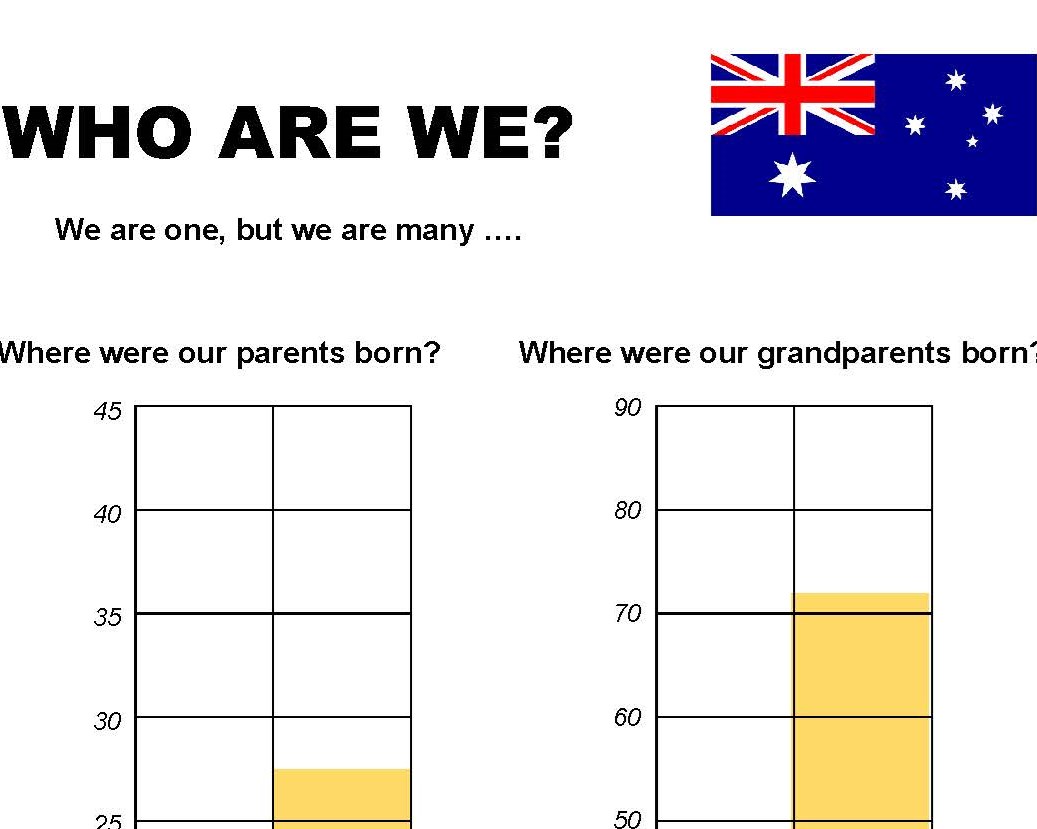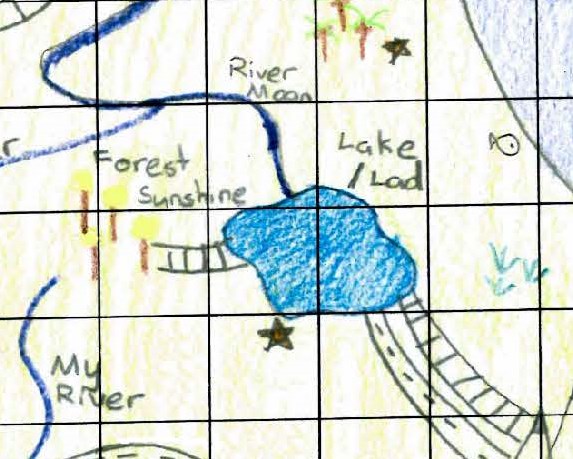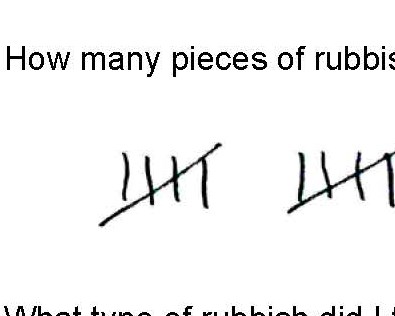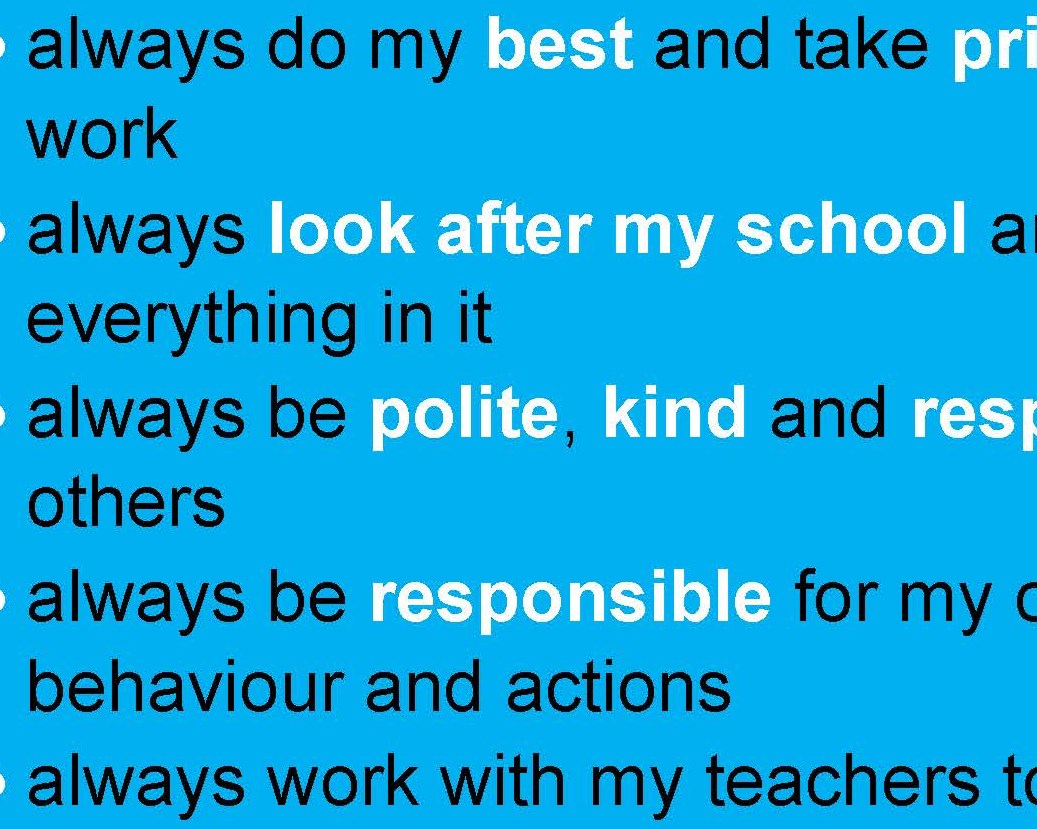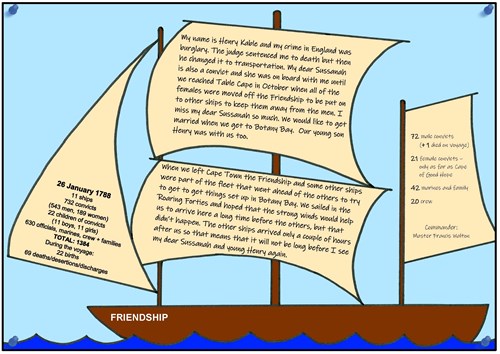Cook’s logbook
Summary of task
Students, under teacher guidance, collaboratively traced the journey made by James Cook in the Endeavour between 1768 and 1771 to create a class map of the voyage. This map is included as part of the work sample. Students then chose four locations along the route for further investigation. Supported by the teacher and the teacher-librarian – through the provision of a range of written, visual and digital sources, including selected extracts from Cook’s journal – students adopted the persona of James Cook to write their own journal entries to describe the events and importance of each of their chosen locations. The journal entries were drafted, edited, word-processed, printed and displayed in the classroom. The entire sequence of activities, from the co-creation of the map through to the publication of the final journal entries, took place during class time over a four-week period.
Achievement standard
By the end of Year 4, students recognise the significance of events in bringing about change. They explain how and why life changed in the past and identify aspects of the past that have remained the same. They describe the experiences of an individual or group in the past.
Students sequence information about events and the lives of individuals in chronological order with reference to key dates. They develop questions about the past and locate, collect and sort information from different sources to answer these questions. They analyse sources to detect points of view. Students develop and present texts, including narrative recounts, using historical terms.
